By Leith van Onselen
As Houses & Holes reported earlier, the Australian Bureau of Statistics (ABS) released the labour force data for February this morning.
In seasonally adjusted terms, total employment decreased 15,400 (0.1%) to 11,444,000, with all of the losses relating to part-time employment (see below chart). The result disappointed economists, who had expected the ABS to show an addition of 5,000 jobs in February. It also partially offset the strong result last month whereby 46,300 jobs were created.
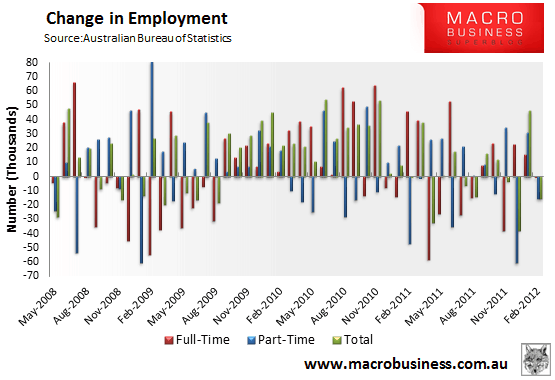
As with all monthly releases, it’s the trend that matters. And this release confirmed the stagnation of jobs growth since November 2010:
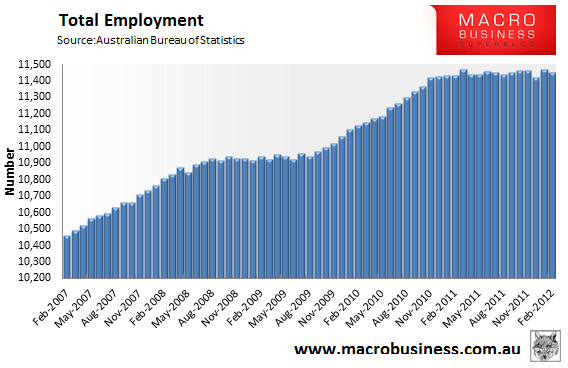
On a rolling annual basis, employment growth was 0.2% in February, which is slightly above the low of 0.0% reached in December 2011:
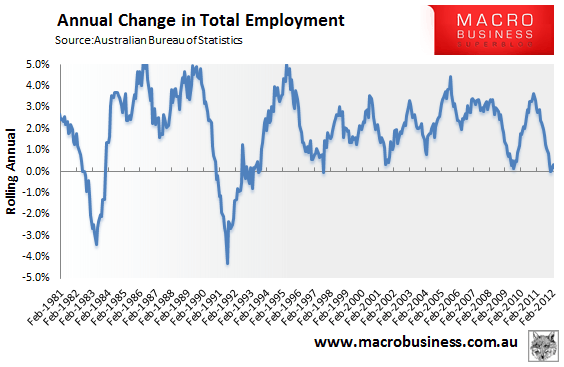
With the loss of 15,400 jobs (-0.13%) and the labour force participation rate declining only marginally (-0.06%), the headline unemployment rate rose by 0.14% to 5.24%, still low historically.
One bright spot in the result is that the aggregate number of hours worked actually rose by 21.6 million hours in February, almost fully offsetting the losses of the prior month (-23.7 million hours). However, the aggregate number of hours worked in February 2012 (1,616.6 million hours) was only slightly above the same period last year (1,610.5 million hours in February 2011), further confirming the stagnation of employment:
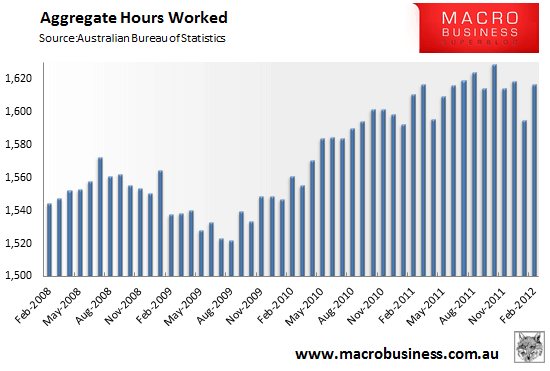
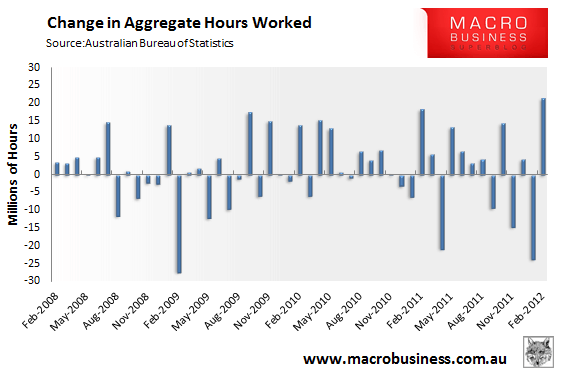
Turning to the state-by-state breakdown, employment losses were by far the greatest in Queensland and Victoria:
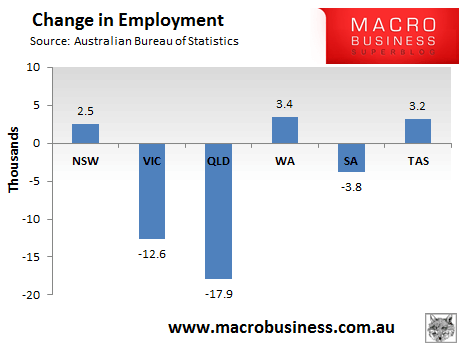
And reflecting its status as Australia’s resources capital, Western Australia has by far the lowest unemployment rate in the nation (4.0%). It was also the only state to experience a fall in its unemployment rate (from 4,2%) in February. By contrast, unemployment rates in the other states are much higher and were either flat or rose in February:
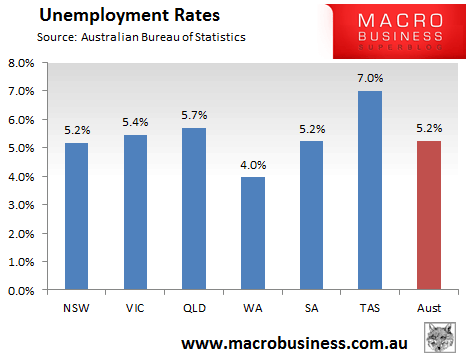
So overall it’s a mixed result. Although the economy shed 15,400 jobs and the unemployment rate rose slightly, full-time employment remained steady and aggregate hours worked recovered most of last month’s losses.
While there’s a long time between now and the next RBA decision on interest rates, and anything can happen between now and then, I do not believe that the employment numbers are significantly weak to sway the RBA one way or the other.

